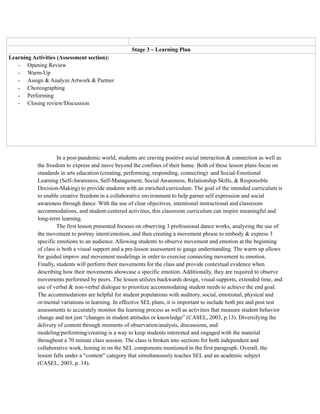These lesson plans focus on using dance to develop students' social-emotional skills. The first plan has students observe dance videos to analyze emotion portrayal, then choreograph and perform movements expressing emotions. The second has students analyze artwork with partners and create a duet responding to it. Both plans utilize various activities, modifications, and assessments to engage students and enable creative self-expression and social awareness through dance in a collaborative environment. The overarching goal is to foster positive social interaction, freedom of expression, and connection for students in a post-pandemic world.



